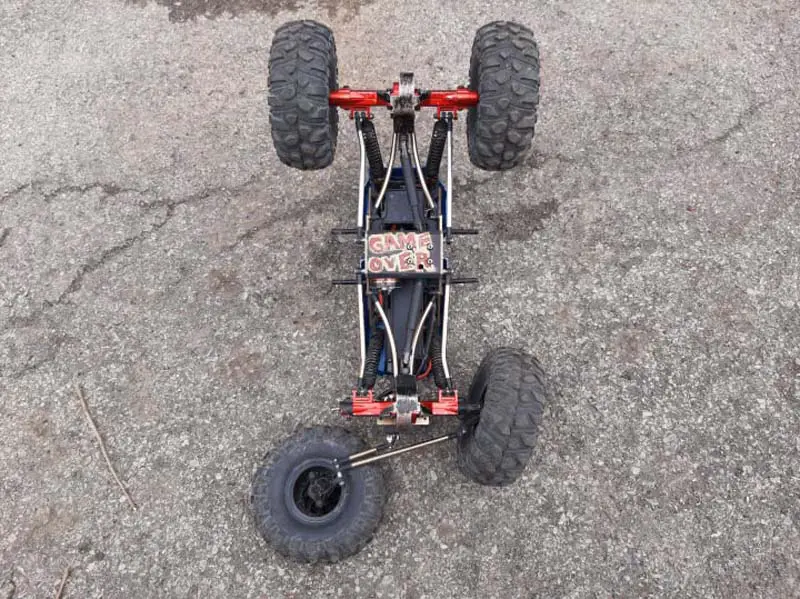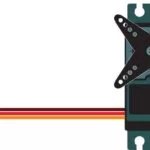4 Reasons An RC Servo Go Bad (Inspect&Fix)


We all have to deal with it at some point: the day our RC servo finally goes bad and stops working.
It’s definitely a bummer, but in this article, we’ll give you the knowledge you need on the ins and outs of servo degradation, what to avoid when managing and handling your servo, and how to know if it’s going bad.
Let’s start with the question of the hour, shall we?


Do RC Servo Go Bad
Yes, RC servos absolutely go bad, and they will degrade faster with improper care.
There are many ways that your servo can go bad, such as excessive overheating, humid conditions, and the dreaded motor overload.
As with any other motor, wear of use, same as neglecting conditions shortens the life span of the servos.
4 Causes Making A Servo Go Bad
Some of you may be struggling heavily with servos that always seem to go bad faster than expected.
If this is the case, then you may be unaware of the things that can degrade the condition of your servo quickly.
#1 Humid Condition
One of the most common mistakes is subjecting your servo to humid conditions
Humidity can not only damage the electronics on the inside of the servo, but also corrode the bearings that enable the servo’s angular rotation.
#2 Debri, Sand and Other Particles
Debris, dust, oil, and other contaminants getting inside of the servo.
Neglecting to clean out your servo can cause much faster degradation than expected. You should always be mindful of where and how you run your RC car, and always remember to routinely inspect and clean your servo.
#3 Over-tight screws
When installing your servo in your RC car, you may over-tighten it to secure it.
When you tighten your servo too much, it can cause more violent vibrations when the RC car is running, which can shake the inner components in the servo loose, as well as possibly damage the other components in your RC car.
#4 Mis-installing Your Servo
Accidentally installing your servo incorrectly.
You may be rushing the installation of your servo, or you may have just simply connected the wires where they weren’t supposed to be, but regardless, the incorrect installation of your servo could lead to many problems, and the main problem being that it could short circuit and completely break your servo.
Why RC Servos Wear Out
There are several reasons as to why an RC servo wears out, and we’re going to break some of them down for you (no pun intended).
Time
The number one reason your RC servo wears out is due to time, regardless of how well you may have taken care of it.
Unfortunately, nobody can make their servo last forever. It doesn’t matter how well you take care of it, your servo will eventually wear out, and this is natural.
The precautionary measures you take will still lead to a longer lasting life for your servo, but don’t expect it to last forever.
Electrical Wear Out
The electrical components inside of your servo can also wear down over time. This can be due to the natural vibrations that will gradually degrade the condition of the electrical components over time.
The electrical components of your RC servo will eventually begin to break down, and this can happen quicker with the rough use of your RC car, especially in wet environments and humid conditions.
Spike in Power
A bad drive or power supply can lead to the complete destruction of your RC servo.
This can cause a spike or many spikes in power, which could permanently fry your RC servo’s electrical circuitry, leading your RC servo to becoming completely useless.
Loose Cable
A damaged cable can also lead to a spike in voltage.
It’s always a good idea to check your equipment before and after installing your RC servo, as a damaged cable can cause about the same amount of damage as a bad drive or power supply.
How Can You Tell When A Servo Is Going Bad?
Knowing the signs of a declining servo is essential to staying on top of your servo’s maintenance and health.
You may not know exactly what those signs are, but today, we’re going to enlighten you so that you may keep your servo in good health.
Louder Than Usual
If your servo is operating louder than usual, this is usually a sign that the servo’s bearings are becoming worn out.
If you hear a loud humming noise followed by the decline in your servo’s functionality, it’s best to send it in to a professional for repairs.
Oily Cables
If you happen to notice that your servo’s cables are coated in some kind of oil, this is the coolant leaking down and into your servo’s other components.
Check your cables regularly for coolant, as letting this go uncleaned can severely damage the electric components in your servo, causing them to short out.
Your Servo is Drawing High Amps
When testing your equipment, you may notice that your servo equipment is drawing high amps.
If your servo equipment is drawing high amps, this could lead to severe problems for the components of your servo. It’s best to immediately send the servo in to a professional for repairs.
Do Servos Overheat?
If you run your servo hard enough and/or in hot weather, you may be wondering if this could lead to significant overheating.
The answer?
Absolutely. Your servo, like any other electronic component, can be subjected to overheating.
But what causes a servo to overheat?
- Dirt is a pretty common culprit. Dirt can get caught in the heat sink of your servo, causing the heat generated by your servo to build up until the servo’s components are damaged.
It’s good to make a habit out of inspecting and cleaning the inner components of your servo regularly to avoid potential overheating.
- A broken fan can also spell danger for your servo’s health. If the fan no longer works, your servo will soon stop working also, especially with regular and rough use of your RC car.
If you find that your RC servo’s fan has stopped working, immediately seek to get it replaced, and refrain from using your RC car as much until you get a new fan for your servo.
- Using an incorrect motor rating can lead to motor overload.
Motor overload can put unnecessary stress on your servo, causing it to overheat faster than expected.
These are only some of the reasons as to why a servo overheats, but they are some of the most common. Please take care in making sure that your servo is running cool and efficiently.
How Much Its Cost To Replace A Bad Servo
When you need to replace a bad servo, you may be concerned about the costs.
Not to worry, because we’re going to give you an estimate of the most common servo prices.
Most worthwhile servos on the market are approximately priced between $158 – $185.
This is all the more reason to take care of your servo to avoid having to pay extra to replace it.
You Can Fix A Bad Servo Yourself
In order to save cash, many of you will be wondering if you can repair your RC servo yourself.
Well, in many cases, repairing a servo yourself, especially if you’re inexperienced, could lead to many more problems down the road.
However, if you have the knowledge and experience, then repairing your RC servo is feasible, but it’s more common to have your servo sent in for repairs by a professional or just buy a new one.
How Long Can You Expect Your RC Servo To Last
Many of you may be wondering if your RC servo will last long, especially if you like to play rough with your RC car.
Under ideal conditions, an RC servo can last up to 20+ years.
However, under rough conditions, you can expect your RC servo to last for approximately a year.
How Should You Test Your RC Servo
Testing your servo’s equipment is key to maintaining its health and longevity, but how do you even do that?
Well…
Finding servo testing kits on the web is easy! And many of them come with a handy manual, which will ensure your success in safely testing your servo’s equipment.
The Barnabas Robotics Servo Motor Tester Kit is one such testing kit that is sure to satisfy.





